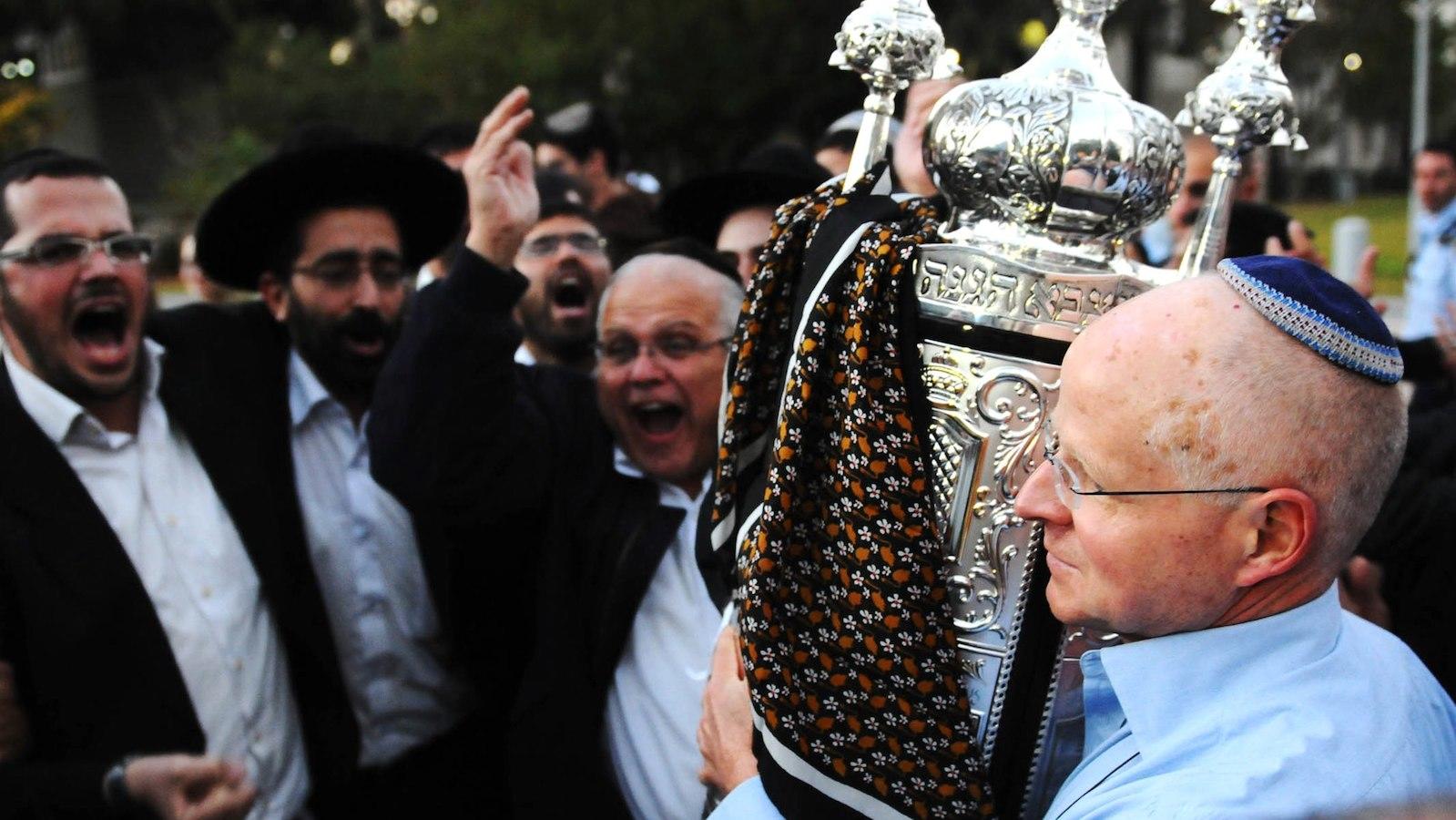The festivities of Simchat begin in the evening with the Maariv service. After the recitation of the Amidah, the hakafot (Torah processionals) are begun with the recital of attah hareita, a collection of biblical verses in praise of God and the Torah. Each verse is read by the reader and then repeated by the worshipers in the congregation. In some communities each verse is read by a different member of the congregation and then repeated by the entire congregation.
After the recitation of the attah hareita, all of the Torah scrolls are removed from the Ark and carried in procession in the synagogue. This is done seven times, and in each procession each Torah is given to a different person so that as many people as possible should have an opportunity to participate.
In traditional settings, all kohanim and leviim — priests and Levites — are honored first, followed by everyone else. Each procession is done to the chanting of prescribed hymns. To these are added songs and hymns of a joyous nature. Children, too, are invited to participate, often carrying specially created smaller Torah scrolls.
It is also customary to hand out flags for children to carry, supposedly reminiscent of the tribal flags under which the Israelites marched in the desert. Another custom is to put an apple on top of the flag, or an apple with a hole carved out for a lighted candle — again, to evoke images of Torah as light.

Help us keep Jewish knowledge accessible to millions of people around the world.
Your donation to My Jewish Learning fuels endless journeys of Jewish discovery. With your help, My Jewish Learning can continue to provide nonstop opportunities for learning, connection and growth.
It is considered a great honor to carry a Torah scroll, and everyone who is capable enjoys the opportunity to participate. Dancing in the synagogue sanctuary is often an important part of the festive processions as well, and in some synagogues the scrolls are carried out of doors, adding a wonderful spiritual dimension to the festivities.
After the seven hakafot, all of the Torah scrolls are returned to the Ark except for one. Custom varies about what is read on the night of Simchat Torah. In some places any portion that the scroll happens to be rolled to is read. The more traditional prevailing custom is to read Vezot HaBeracha (Deuteronomy 33), allowing three aliyot. Then the Torah is returned and the service is concluded.
Excerpted from Every Person’s Guide to Sukkot, Shemini Atzeret, and Simchat Torah. Reprinted with permission of the publisher. Copyright 2000 Jason Aronson, Inc.



